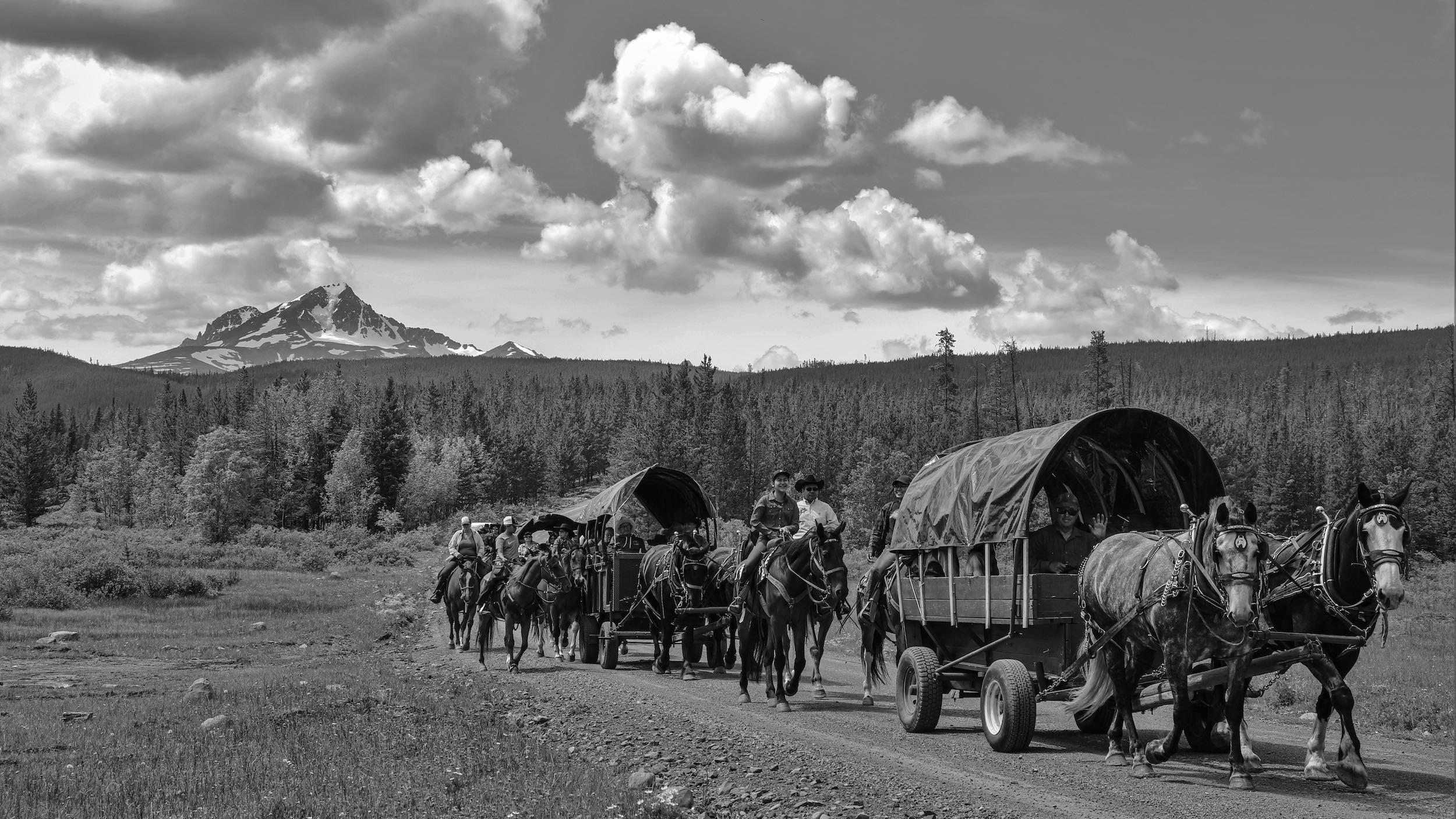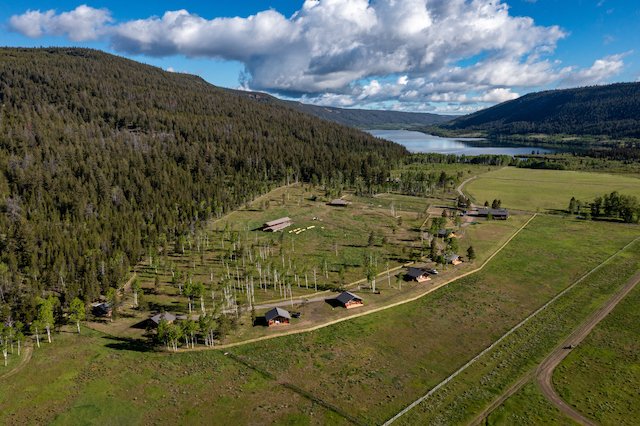
Tŝilhqot’in History
The Tŝilhqot’in People
The Tŝilhqot’in National Government is the governing body for the Tŝilhqot’in people. The Tŝilhqot’in Nation is comprised of six communities located throughout the Tŝilhqot’in (Chilcotin) territory, including the Tl’etinqox, ʔEsdilagh, Yuneŝit’in, Tŝideldel, Tl’esqox and Xeni Gwet’in.
The communities work as a Nation to continue the fight of our six war Chiefs of 1864. The war Chiefs stood against the Canadian Government in an effort to gain Tŝilhqot’in Aboriginal Rights and Title to our lands we call Tŝilhqot’in, located west of Williams Lake and in the Chilcotin Region of B.C., Canada.
Tŝilhqot’in Nation History
Tŝilhqot’in history: Chilcotin War of 1864
The name Tŝilhqot'in carries varied meanings and loosely translates to “people of the river” or “people of the blue water”.
From a time before the founding of the Province of British Columbia, the Tŝilhqot’in people have steadfatsly protected their lands, culture, way of life including the need to protect the women and children from external threats - often at great sacrifice.
Tŝilhqot'in war Chiefs stood against the Canadian Government in 1864 in defense of their lands and people. The conflict was referred to as the ‘Chilcotin War of 1864’.
Pic: An 1873 portrait of one of the chiefs, Klatsassan, by the missionary Robert Christopher Lundin Brown.
At the end of the conflict, when the Colony martyred five of “the Chilcotin Chiefs” on October 26, 1864 it was one of the largest mass executions in Canadian history.
In 1865, a sixth leader was executed but the events of the Chilcotin War of 1864 exemplify the fortitude and the unwavering resistance that defines Tŝilhqot’in identity to this very day.
Many of those who survived the smallpox epidemics or participated in “The Chilcotin War” went on to have long lives and large families with many of the Tsilhqot'in today counting them as ancestors.
Tŝilhqot’in history: Reconciliation and Repatriation
-
ON AUGUST 23, 1989, THE NEMIAH DECLARATION SET A PRECEDENT FOR UPCOMING SUPREME COURT CASE: TSILHQOT'IN NATION VS. BRITISH COLUMBIA WHICH PROVED ABORIGINAL RIGHTS AND TITLES TO A PORTION OF XENI GWET'IN TRADITIONAL TERRITORIES.
-
IN 1993, ATTORNEY GENERAL OF BRITISH COLUMBIA, HONOURABLE COLIN GABELMAN, APOLOGIZED FOR THE WRONGS DONE TO THE TSILHQOT’IN BEFORE AND AFTER THE CHILCOTIN WAR.
-
ON JUNE 26, 2014, FOR THE FIRST TIME IN CANADIAN HISTORY, THE SUPREME COURT OF CANADA RECOGNIZED ABORIGINAL TITLE BY DECLARED A SMALL PORTION OF THE TERRITORY WITHIN THE AREA OF NEMIAH VALLEY TO THE TŜILHQOT’IN NATION.
-
ON OCTOBER 23, 2014, TSILHQOT’IN MEMBERS HEARD FROM THEN PREMIER OF BRITISH COLUMBIA, CHRISTY CLARK, WHEN SHE FORMALLY REDRESSED THE INJUSTICE OF THE WRONGFUL TRIAL AND HANGING OF THE SIX TSILHQOT’IN CHIEFS IN BC’S LEGISLATURE. THE CHIEFS WERE EXONERATED BY THE PROVINCE OF BRITISH COLUMBIA ON THIS DAY.
-
FOLLOWING THE 2014 SUPREME COURT OF CANADA ABORIGINAL TITLE AND RIGHTS CASE WIN BY THE TŜILHQOT’IN NATION, THE TŜILHQOT’IN NATIONAL GOVERNMENT ENTERED INTO NEGOTIATIONS WITH COLONIAL BRITISH COLUMBIA.
-
ON NOVEMBER 2, 2018, PRIME MINISTER JUSTIN TRUDEAU APOLOGIZED TO THE TSILHQOT'IN NATION AND SIX COMMUNITIES, WHILE ON AN OFFICIAL VISIT TO THE LANDS FOR THE HANGING OF SIX CHIEFS MORE THAN 150 YEARS AGO IN AN EMOTIONAL CEREMONY FRIDAY THAT ONE CHIEF SAYS BROUGHT AN END TO A "DIFFICULT JOURNEY." *Source from CBC News
-
THE GWETS'IN NILT'I PATHWAYS AGREEMENT STARTED IN 2019 IS A TRIPARTITE AGREEMENT BETWEEN THE TŜILHQOT'IN NATIONAL GOVERNMENT, COLONIAL BRITISH COLUMBIA, AND COLONIAL CANADA.
Tŝilhqot’in Culture
Today the Tŝilhqot’in communities including the Xeni Gwet’in still fight to preserve their culture including language, artisans, skilled craftspeople, historical artifacts, important geographical and cultural landmarks across their territory for their future generations.
Landmarks
Preserving significant landmarks, cultural and historical such as the 1864 Memmorial Plaque, local petroglyphs, traditional fishing weirs and geographical elements with spiritual connections and stories for the Tŝilhqot’in.
Language
Recording and teaching our language to preserve the past.
Investing & Sharing
Elkin Creek Ranch (now Nemiah Valley Lodge) has been part of Xeni Gwet’in’s history for decades. It is now Indigenous owned and showcases the Xeni’s Gwet’in’s culture to the world.
Traditions
Annual traditions and gatherings for strong communities.
Part of the Tŝilhqot’in Nation’s six communities, the Xeni Gwet’in is populated by approx. 400 descendants. Roughly 250 of these descendants live in other territories and landscapes across colonial Canada and the United States, and 150 reside within the Territories primarily in Nemiah Valley.
Artisans & Craftspeople
Fostering a strong community of artisans and craftspeople for beading, weaving, leathermaking, drum making and more.
BC’s Wild Horse Preserve
There are few sights more magical than a herd of wild horses grazing with the Coast Mountains as their backdrop.
The ?Elegesi Qayus Wild Horse Preserve is home to between 800 and 1,000 wild or free-roaming horses in the Chilcotin. As many as 42% of these can be found roaming and living within the declared title lands of the Xeni Gwet'in First Nations.
Reclaiming Nemiah Valley Lodge
The story of the re-imagining of Elkin Creek Ranch to Nemiah Valley Lodge, including it’s rejuvenation and renovation before it’s official re-opening in 2022 displays the committment of the Xeni Gwet’in to build for their future and share their culture with the world.
The lands around Nemiah Valley Lodge and Vedan Lake have traditionally been used by the Xeni Gwet’in for fishing, hunting and gathering and are an important part of Tŝilhqot’in traditions and history.
More Resources
The landmark case for the Tŝilhqot’in and Xeni Gwet’in people to preserve Xeni’s Wilderness was a first in Canada, as well as the Xeni Gwet’in’s journey towards reconcilation and repatriation of their lands, traditions and culture.
More details and resources can be found in Nemiah’s Journal or on the Xeni Gwet’in & Tŝilhqot’in Government websites.














